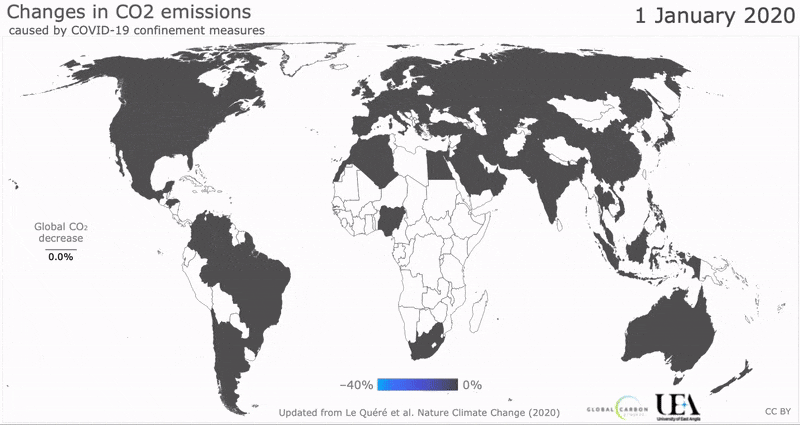CS-4
COVID-19 & Climate Change

Positive Effects
on Atmosphere

Air quality has improved
as fossil fuel use decreased
due to plant shutdowns and
vehicle movement restrictions
caused by COVID-19 pandemic.
Significant changes were observed when examining the emissions of nitrogen dioxide, one of the causes of air pollution. This can be seen from the rapid decline in nitrogen dioxide concentrations across China after the lockdown in Wuhan, China, on January 23, 2020, and in Italy, where movement restrictions were imposed in early March 2020.

Emissions of carbon dioxide,
a representative greenhouse gas
that threatens the Earth,
also recorded a significant decline.
Global total carbon dioxide emissions in 2020 were 34GtCO2, down about 7% from that in 2019, marking the steepest decline since 1970. From the end of January to February 2020, when lockdowns were imposed on cities in China, carbon dioxide emissions fell by about 8% compared to the same period in 2019, and by April 2020, when lockdowns took place on continents around the world.

Emissions of various air pollutants
have also dropped sharply.
As of April 2020, air pollutants such as carbon monoxide, sulfur dioxide, and black carbon decreased by 25-27% compared to 2019. This was also true in Korea. The average concentration of carbon monoxide in the seven major cities between February and March 2020 was 0.4929 ppm, down 0.0643 ppm from the same period a year earlier. Nitrogen dioxide concentrations fell by 0.0039 ppm and ozone concentrations fell by 0.0016 ppm.
 |  |  |  |
|---|




